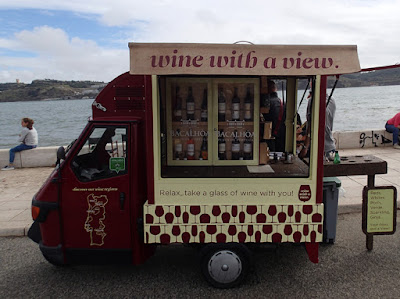Less than a month later, the recently widowed Orwell would leave London for the Scottish island of Jura, where he would write 1984, the novel that evokes the battles of our current spring like no other. The book is about much more than Newspeak and doublethink, of course, but how can one not feel terrified at the prescience of sentences like these: “The party told you to reject the evidence of your eyes and ears. It was their final, most essential command.” And not simply terrified, but saddened too, a sadness approaching despair.
Yes, we have given ourselves an unhealthy dose of Brexit and Trump and Wilders and Le Pen. But in some simultaneously parallel universe, the world has returned a veritable feast of migrations and blossomings, everything from ducks to daffodils. Now it is our responsibility to choose among them, to honor some and embrace others. As Orwell writes, “I think that by retaining one’s childhood love of such things as trees, fishes, butterflies and—to return to my first instance—toads, one makes a peaceful and decent future a little more probable.

Not likely, you understand, he wouldn’t go as far as that. But we must nourish hope where we find it, as strange as that may seem. At some moment between 1946 and 1948, during repeated bouts with tuberculosis, Orwell had this thought: “In principle the war effort is always so planned as to eat up any surplus that might exist after meeting the bare needs of the population. In practice the needs of the population are always underestimated, with the result being that there is a chronic shortage of half the necessities of life; but this is looked upon as an advantage. It is deliberate policy to keep even the favored groups somewhere near the brink of hardship, because a general state of scarcity increases the importance of small privileges and thus magnifies the distinction between one group and another.” (The architects of President Trump’s 2017 budget blueprint appear to have taken these words as gospel.)
Sounds crazy, yes. Crazy and plausible. Which is much preferable to crazy and hateful, or crazy and demonstrably false. Both of which have been in depressingly abundant supply.
And by crazy and plausible, I don’t just mean Orwell’s reference to “deliberate policy.” I mean the notion of looking to dystopia for hope. Before inventing Winston Smith, Orwell created another hopeless nostalgist, George Bowling, the anti-hero of Coming Up for Air. This George admits, as a first confession, “that when I look back through my life I can’t honestly say that anything I’ve ever done has given me quite such a kick as fishing. Everything else has been a bit of a flop in comparison . . . . And the other confession is that after I was sixteen I never fished again.” Which was not true of Orwell himself; he fished and caught lobsters while in Jura and—so sure was he of his imminent recovery—his favorite fishing rods were leaning against the wall of the hospital room where he died at the untimely age of forty-six.
George Bowling explains his deprivation like this: “Because that’s how things happen. Because in this life we lead . . . in this particular age and this particular country—we don’t do the things we want to do.” But we don’t live in Bowling’s age (the late 1930s), Orwell’s prophecies are not yet a done deal, and neither is the previously unimaginable convergence of Russian plutocracy and American idiocracy.
Orwell would have disliked the idea of himself as oracle; he rather preferred the role of “pamphleteer.” In other words, he wished to move his readers to action, even if that activity was no more revolutionary than enjoying a strong cup of tea or another pint at the pub. Such things, after all, are what remind us of our truly common heritage, the bonds we share as creatures who live and yearn and die. If we want to raise the odds of that “peaceful and decent future” ever more slightly, then all of us in this particular age and this particular country need to do those particular things that we want to do. Now—before everything is, as George would say, “cemented over.”
I don’t advocate the sharing of inconsequential pleasures as a source of distraction from the news cycle or a respite from active resistance; I do it to prime the well. The small is not the enemy of the good. Without raindrops, there would be no river; without yeast, there would be no beer.
So enjoy a walk in a chestnut wood. Listen to the trilling song of a common blackbird. Plant a few nasturtiums in your window box. Me? I’m going fishing.















































